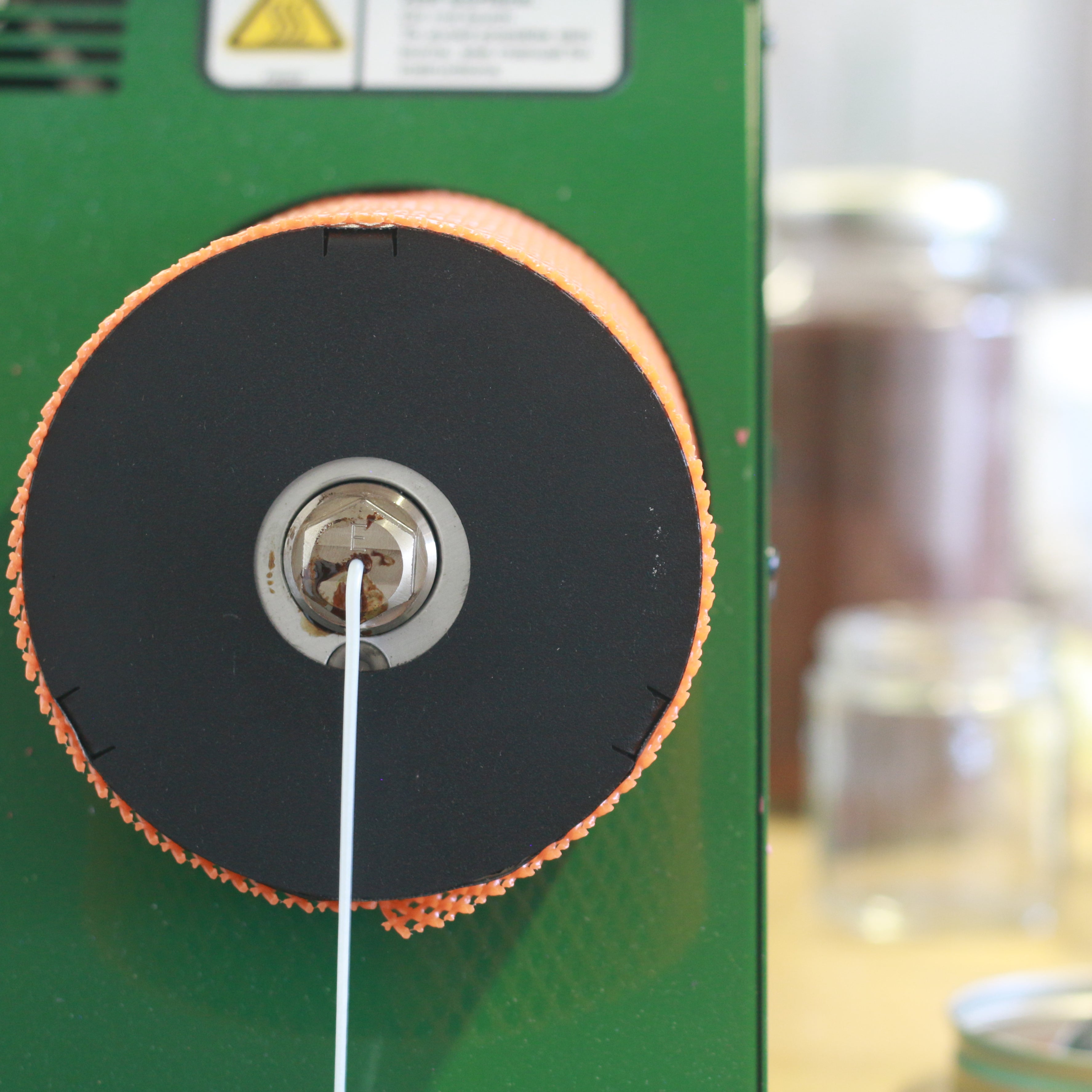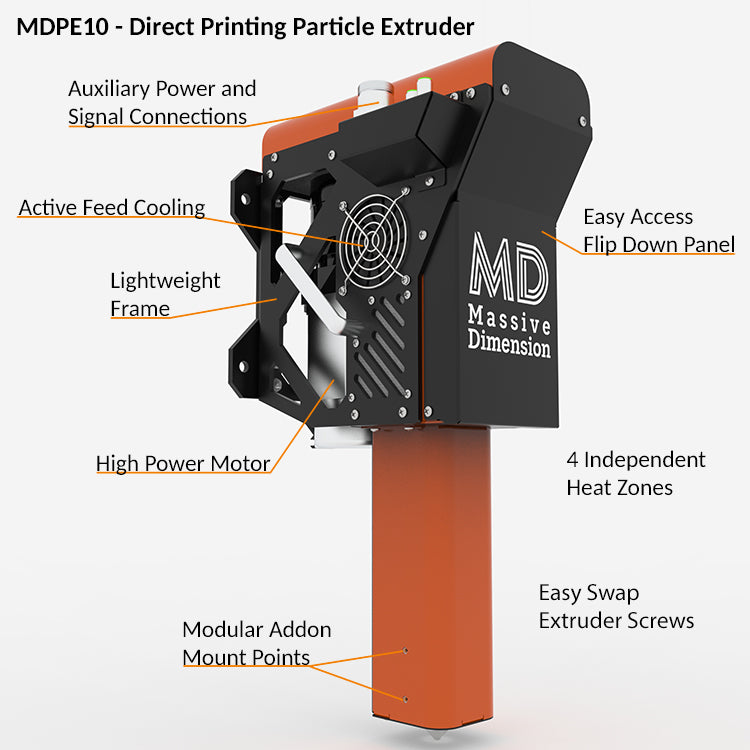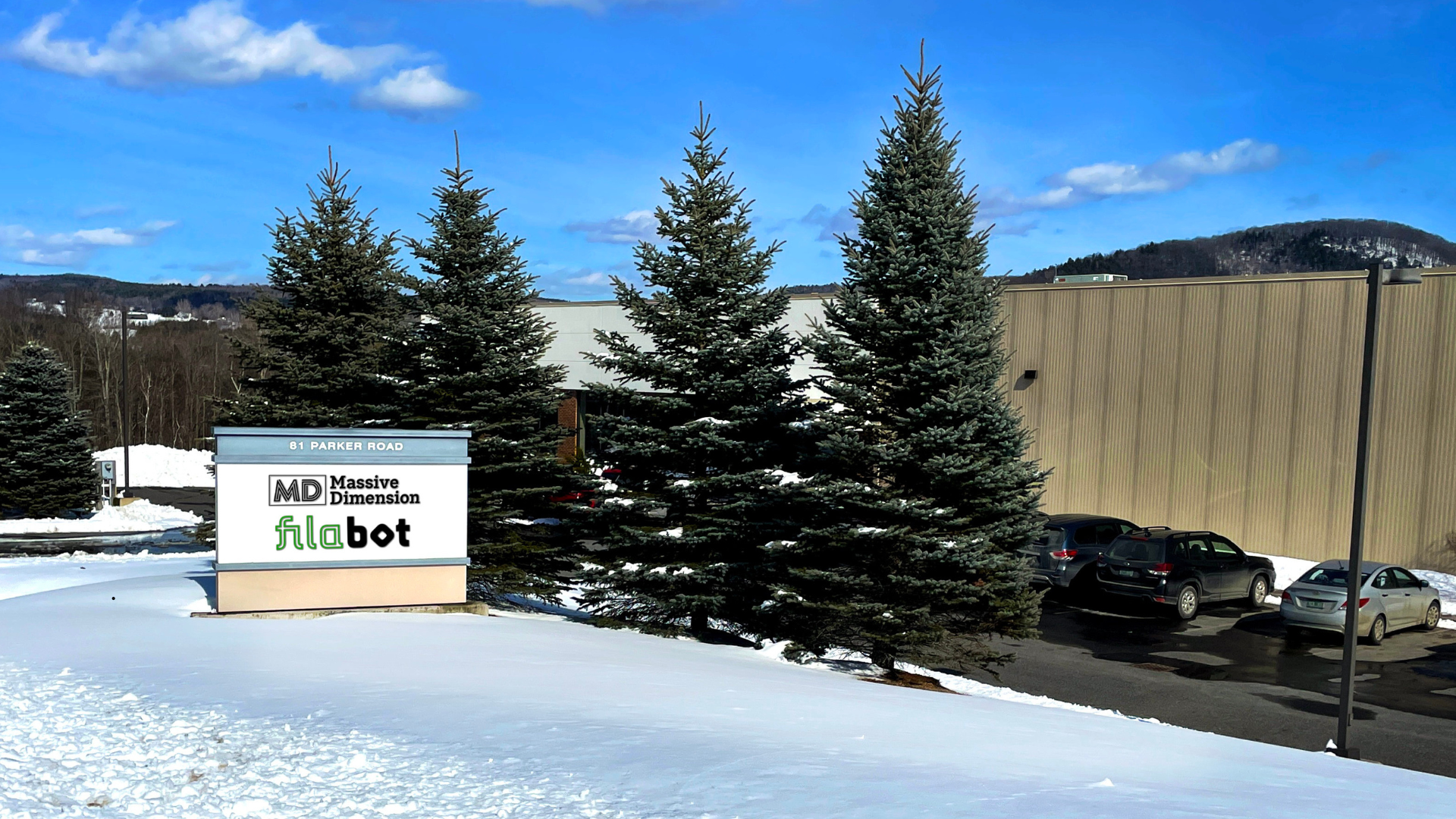MDPH2 vs. MDPE10
The MDPE10 is the latest Massive Dimension product to launch, a brand new particle extruder meant to expand the possibilities for users exploring the realm of large format printing. More products means more options- but options can be paralyzing if you don’t know how to choose. Not to worry! We are here to help with a side-by-side comparison between the two machines that can assist your selection and make sure you get the extruder that will be the best fit for your production needs.
Both of these machines are designed towards a similar purpose, in fact the MDPE10 is a direct successor to the MDPH2, and it might be helpful to think of the 10 as the evolution of the 2 - the 10 is Charizard and the 2 is Charmeleon. In this analogy your desktop filament-driven printer is Charmander- cute, but underpowered by comparison. Either the MDPH2 or MDPE10 will increase your output vs. a filament-driven machine, but just how far you want to push that output might be your first consideration when choosing between them.
Extrusion Output
Ever wonder what the number at the end of the extruder name is? It represents the number of pounds of polymer that the machine can put out running the screw at full speed. So while the MDPH2 can extrude up to two pounds of polymer per hour, a very impressive number, the MDPE10 can put out ten pounds per hour- I bet you can do the comparative math equation! But if you haven’t tried calculating your required polymer output to achieve your printing goals, you might want to consider if you could even exceed two pounds per hour while printing. Depending on your movement system, you might not be able to print fast enough to keep up with the output, and finer detailed prints utilizing smaller nozzles are unlikely to exceed the two pound threshold either.
Types of Polymer
Both the MDPH2 and MDPE10 enable you to break free from the yoke of filament. Welcome to the world of pellets! More economical, efficient, and versatile, feed them directly into the print head and away you go. The MDPH2 has a ⅝” diameter feed throat while the MDPE10 has a 1” throat. This larger throat on the MDPE10 allows material to move more freely through the feed tube and decreases the chance for jams with inconsistently sized materials. The MDPH2 and MDPE10 have been tested in-house with a wide variety of commonly used printing polymers including all the favorites- PLA, PETG, ABS, TPU, TPE, HIPS, and more. Additives such as carbon fiber, wood dust, metal powder, and ceramic pigment have been tested as well. Where the MDPE10 exceeds the possibilities of the MDPH2 is in the fine-tuning of melt flow, which opens it up to a broader range of tricky polymers that require a longer melt time.
Temperature and Heat Zones
The MDPH2 has a single heat zone, at the end of the screw closest to the nozzle. Controllable by a PID, it is capable of heating up to 450C. Meanwhile the MDPE10 has four separately controllable zones that heat up to the same 450C max temperature, they run the length of the screw from the feed throat to the nozzle. This means that the MDPE10 has a longer melt window to take polymers from their unheated, solid state to an ideal molten flow state for extrusion. For common, low temperature polymers the MDPH2’s single heat zone is sufficient, and even higher temperature polymers can be melted by the screw quickly enough as long as a certain print speed threshold isn’t reached. However, the MDPE10 can melt those same polymers while maintaining a faster extrusion rate- part of what allows the larger overall output of the machine. So it might help you to choose between the two machines if you have a clear idea of what materials you would like to print with, and what their melt flow requirements are.
Screw Configuration
Remember how the MDPE10 has three more heat zones than the MDPH2? To spread those heat zones apart the whole screw was made longer. It is about 1.5 times as long as the screw of the MDPH2- 16” instead of 10”. Both the MDPH2 and MDPE10 feature removable screws. The MDPE10 has a new design to ease the process of swapping screws, with an access port on the top of the enclosure to knock free the screw for removal, and then allowing you to hold the screw in place with a magnet while replacing the nozzle. The MDPH2 offers a removable screw to enable easy cleaning for periodic maintenance, but there is only one screw available, engineered to be the best possible jack-of-all-trades for common polymers. The MDPE10 has five different screws available, each with different flight configurations and finishes to most precisely match the needs of particular polymers. You aren’t required to buy all the different screws, and the machine ships with a general purpose screw much like the MDPH2, but if you have a particular polymer in mind you might find a screw better suited to your needs!
Weight
The MDPH2 weighs in at only eighteen pounds, while the MDPE10 tips the scales at thirtypounds. If you are considering the MDPE10, you will want to make sure your movement system is beefy enough to handle the additional weight- for example, a SCARA system might have trouble holding the MDPE10 without bending at its outer limits, while still being able to run the MDPH2.
Conclusion
Both the MDPH2 and MDPE10 are powerful pellet driven extruder heads that will have you printing bigger, faster, and with a wider range of materials than a filament based system. Whether you need the ramped up output and capacity of the MDPE10 will depend largely on what your intended goals and polymers are. At a more modest entry price, the MDPH2 will meet the requirements of many hobbyists or enthusiasts, and has been used and tested in industrial applications since its release. If you are testing the boundaries of experimental polymers and need higher levels of customization and optimization, the MDPE10 just might be the solution for you.




